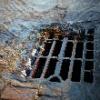The challenge for town planners is to maximise the utility of land for public usage, while creating spaces in which people enjoy living and working within a more natural environment. In recent years there has been far greater awareness of the benefits to human well being to natural living spaces on the one hand, and to the use of green infrastructure t provide long term, lower cost, lower maintenance solutions to water management in urban areas. These challenges have been compounded by rapid population growth in the south-east of the England and pressures to accommodate larger numbers of people within an already crowded space. In coming years, a major challenge will be to reduce the amount of diffuse pollution derived from urban areas, and from light industrial estates in particular.
The construction industry seeks to optimise it use of water throughout the lifecycle of the construction process – from the initial building phase, throughout the life of a piece of infrastructure, and during renovation or demolition. A wide range of water related issues need to be considered, from designing for extremes, or control of normal levels of rainfall, runoff and ground saturation, managing or harvesting the flow of water from buildings and other built surfaces, to disposal of water used within constructed infrastructure – all the while protecting the natural environment, human health and other properties. NERC science is an integral part of the current drive towards green infrastructure and optimising benefits provided by the natural environment within the built environment.































 The Water Security Knowledge Exchange Portal supports the objectives of the
The Water Security Knowledge Exchange Portal supports the objectives of the 